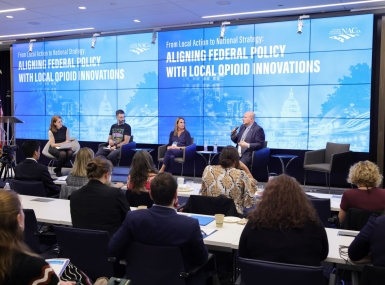Bipartisan legislation introduced to extend child welfare waivers important to counties
Upcoming Events
Related News

Key Takeaways
Update: On June 5, Rep. Don Bacon (R-Neb.) introduced companion legislation in the U.S. House of Representatives that would enact the same provisions on Title IV-E waivers as the U.S. Senate's bill. At NACo's 2018 Annual Conference, members of the Human Services and Education Policy Steering Committee approved a policy resolution supporting the extension of child welfare waivers through FY 2024 to provide counties with greater program continuity and flexibility. Given counties' central role in providing welfare services to vulnerable children, NACo applauds the bipartisan and bicameral efforts to extend child welfare waiver authority and will continue to engage with key congressional offices to promote passage of this legislation.
On January 9, Sens. Dianne Feinstein (D-Calif.) and Marco Rubio (R-Fla.) introduced bipartisan legislation to extend the child welfare waiver program, also known as the Title IV-E waiver. The bill, titled the State Flexibility for Family First Transitions Act, would extend the Title IV-E waiver for two years through FY 2021. The Title IV-E waiver is currently set to expire in September 2019 under the Family First Prevention Services Act (FFPSA), which Congress passed in February 2018 in conjunction with the Bipartisan Budget Act of 2018.
Title IV-E waivers provide federal funds for costs related to the placement of youth into foster care, or for subsidies to support families who adopt foster youths. While most states operate child welfare systems, twelve states either delegate or share child welfare administration with county agencies. In these states, counties use Title IV-E waivers to support services meant to prevent abuse and neglect or encourage the placement of children in family foster care settings when appropriate.
Under the FFPSA legislation passed in February 2018, Title IV-E waivers were amended in two key areas: allowing prevention services to be covered by federal funds and emphasizing the use of family foster care placements. Specifically, the legislation permits child welfare agencies to use federal funds for prevention services with the goal of allowing children that are on the path to entering the foster care system to stay with parents or relatives. The 2018 bill also aimed to curtail the use of congregate or group care for children and instead place at-risk children with family members.
Going forward, the State Flexibility for Family First Transitions Act legislation will be referred to the Senate Finance Committee and considered by legislators during the 116th Congress. The House has not yet introduced companion legislation.
Counties support extending Title IV-E waivers to maintain flexibility as new systems are implemented under the FFPSA legislation. Additional flexibility through the waivers could minimize anticipated cost-shifts to states and counties that could occur by limiting Title IV-E eligibility to children who would otherwise be eligible for such funds and enable counties to provide continuous care to at-risk children. NACo will continue to monitor the progress of this legislation.
For more NACo resources on FFPSA, please see the following links:
NACo Webinar: Family First Prevention Services Act & Your County
NACo Blog: President signs massive two-year budget pact

Attachments
Related News

Ongoing support is crucial for counties tackling overdose rates
The best treatment option for polysubstance use is “contingency management,” which is when someone with substance use disorder is given an incentive, such as money, for not using.

Proposed federal mandates cloud opioid treatment
Counties are positioned to quickly feel the effects of Office of National Drug Control Policy’s new priorities.

National Association of Counties expands programming to build childcare supply
NACo announces the launch of its Childcare Supply Network. This new peer learning network will support local leaders in addressing childcare challenges and co-creating sustainable solutions to strengthen local childcare systems in response to workforce needs.